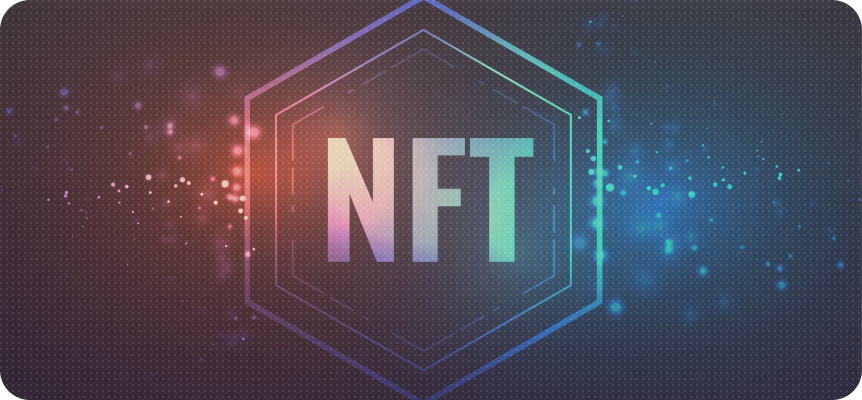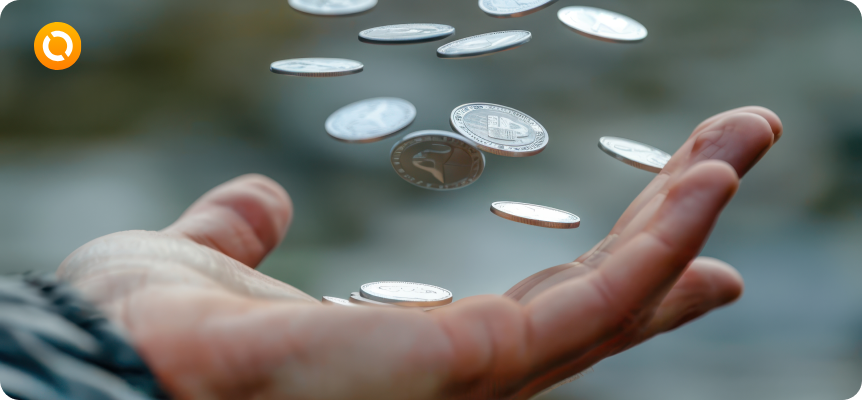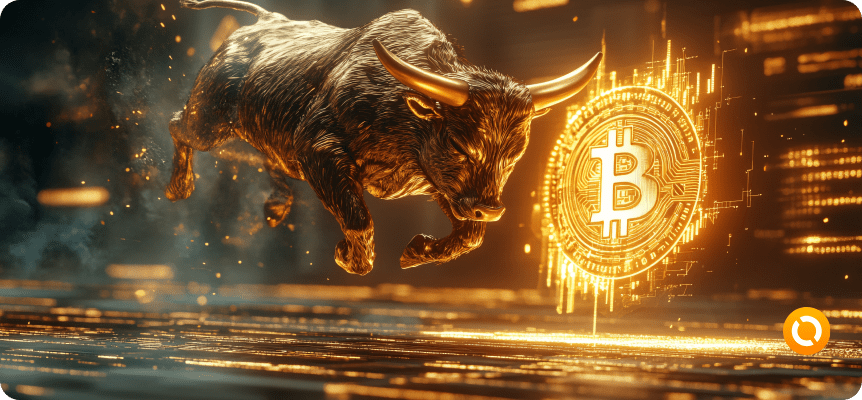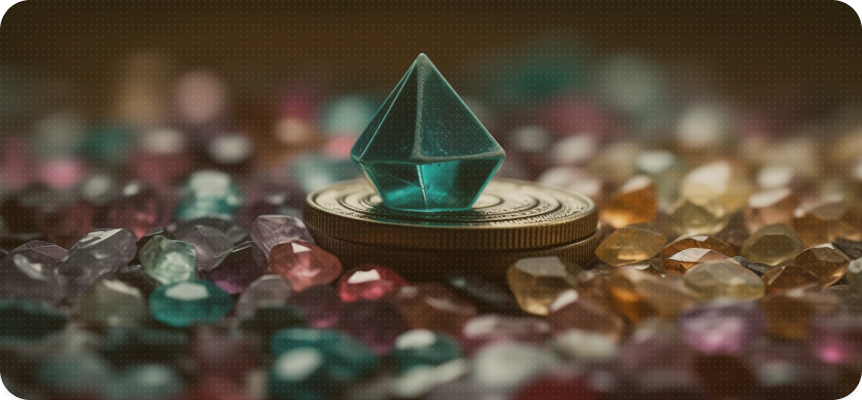
Unlike traditional assets, NFTs exist exclusively on the blockchain, where the owner’s data is recorded using cryptographic technologies. This makes NFTs unforgeable and ensures their authenticity.
NFT (non-fungible token) is a unique digital asset that cannot be replaced by a similar one. Unlike cryptocurrencies, which are interchangeable, each NFT contains unique properties and confirms ownership of digital or even material objects.
NFTs are digital certificates recorded on the blockchain that confirm the authenticity and ownership of a certain asset:
✅ Pictures and GIFs
✅ Music tracks and videos
✅ Virtual items from games
✅ Social media posts (for example, Jack Dorsey’s first tweet sold for $2.9 million)
NFTs can be created on a blockchain that securely stores data about owners and transactions. Buyers can now purchase collectibles such as digital paintings, music files, game items, licenses, and even real estate in virtual worlds.
How does NFT work?
NFTs are not just digital files. They are tokens stored on a blockchain, where information about the owner, transactions, and metadata of the object is recorded. This could be an image, a GIF, music, a video, virtual real estate, in-game items, and much more.
So, in essence, NFTs are stored on a chain of blocks, which makes their processing transparent and secure. When you buy or sell an NFT, information about this is recorded on the network, and the data can no longer be changed. This helps protect copyrights and ensures reliable identification of owners.
🔹 The blockchain records:
✔ Name of the owner and creator
✔ Unique token identifier
✔ History of sales and transfers
One of the key features of NFT is storing links to the original content in decentralized systems such as IPFS. This prevents data loss and ensures the longevity of digital assets.
You can create and sell NFTs through special platforms such as OpenSea, Rarible and Foundation. Here, anyone can start their journey in the world of digital assets. However, in order to successfully earn money, it is important to know which NFTs are in demand and what conditions are favorable for trading.
NFT and Copyright
Although NFTs confirm ownership of a digital object, they do not guarantee exclusive copyright. Anyone can download an image or use the content, but only the owner of the NFT is considered the official owner of the original. The virtual market is built on the concept of digital ownership, where value is formed due to the rarity and uniqueness of the object.
Why do people buy NFTs?
Despite the lack of legal regulation in most countries, NFTs attract the attention of collectors, investors and gamers. The purchase of NFTs can be motivated by various reasons:
Art and Collectibles: Artists release NFT versions of their works, and collectors buy them in the hopes of their value increasing.
Gaming: Virtual items, characters, and accessories are bought and sold on gaming marketplaces.
Investing: Many view NFTs as assets that can generate profits when resold.
Metaverses: Projects like Decentraland and Sandbox allow users to buy digital real estate and interact with the virtual economy.
How to create and sell NFT?
You can create and put up for sale NFTs on specialized marketplaces:
1️⃣ Register on the platform: Choose a marketplace (OpenSea, Rarible, Foundation, etc.).
2️⃣ Create a crypto wallet: Top up your balance with cryptocurrency (usually ETH for Ethereum platforms).
3️⃣ Upload a digital asset: Add a file, description, price, and put it up for sale.
4️⃣ Pay a fee: Some platforms charge a fee for minting NFTs.
How to distinguish a valuable NFT from a worthless one?
The NFT market is full of all sorts of tokens, from iconic digital works to useless pictures created in the hopes of making easy money. To understand whether an NFT is truly valuable, it is important to consider several key factors:
1️⃣ Rarity and uniqueness
The fewer copies of the NFT issued, the more valuable it is. Unique tokens issued in one copy (1/1) are usually more expensive than mass collections.
2️⃣ Popularity of the author or project
The works of famous digital artists or brands are valued much higher than NFTs created by unknown developers. For example, the works of Beeple or the Bored Ape Yacht Club collections are in huge demand.
3️⃣ Community and hype
Community support plays a big role. NFT projects with an active audience, discussions on Twitter, Discord and other social networks have a better chance of increasing in value.
4️⃣ Utility
Some NFTs give their owners exclusive rights: access to closed clubs, discounts, in-game items, or even a share in the company. The more practical use an NFT has, the higher its value.
5️⃣ Liquidity and demand
If a token can be easily sold on large marketplaces (e.g. OpenSea, Rarible, SuperRare), it can be considered liquid. NFTs without consumer demand risk remaining useless.
📌 Conclusion: not all NFTs are equally valuable. Before buying, it is worth conducting an analysis and making sure that the token has at least several of the above characteristics.
The Most Expensive NFTs in History: What Are People Paying Millions For?
Despite the skepticism, the NFT market has already generated multi-million dollar transactions. Here are some of the most expensive NFTs ever sold:
🔹 “Everydays: The First 5000 Days” – $69.3 million
A work by digital artist Beeple was sold at Christie’s in 2021, becoming the most expensive NFT painting in history.
🔹 CryptoPunk #5822 – $23.7 million
One of the rarest punks from the iconic CryptoPunks collection, which was acquired by the CEO of Chain.
🔹 Bored Ape Yacht Club (BAYC)
Some of the monkeys from this collection are sold for hundreds of thousands of dollars, with the rarest examples fetching millions. The owner of the NFT gets access to a closed club with famous personalities.
🔹 «Clock» – $52.7 million
An NFT created in support of arrested WikiLeaks founder Julian Assange.
🔹 «Human One» – $28.9 million
Another work by Beeple, this is a dynamic digital art object that can change over time.
People pay millions for NFTs because of their rarity, exclusivity, brand influence, or significance in digital culture. Some see them as an investment, others as a way to express themselves in the virtual world.
Legal aspects of NFT: is it possible to protect the owner’s rights?
NFTs are often perceived as equivalent to property rights, but in the legal sphere, things are not so simple.
🔹 What does an NFT owner buy?
When purchasing an NFT, a person receives ownership of a unique token, but not always the right to the digital content itself. An artist or developer can restrict the use of an image, even if it is attached to a token.
🔹 Can NFTs be protected legally?
At the moment, the laws of most countries do not regulate NFTs as strictly as traditional assets. This means that in the event of a dispute, proving ownership can be difficult.
🔹 Copyright vs. Ownership of an NFT
Owning an NFT does not mean owning the copyright. For example, if someone buys an NFT of a painting, they can resell the token, but they do not have the right to use the image commercially without the author’s permission.
🔹 What to do if an NFT is stolen?
If an NFT is stolen (for example, from a wallet via phishing or hacking), it is almost impossible to get it back, as blockchain transactions are irreversible. Some marketplaces (for example, OpenSea) can block the sale of stolen NFTs, but this does not guarantee a return.
The legal sphere of NFTs is still poorly developed, and many aspects of ownership and use of tokens remain controversial. In the future, we can expect new laws to regulate this market.
Why do we need NFTs?
NFTs are used in various fields:
Games – buyers purchase exclusive skins, characters, and game items.
Art – artists have the opportunity to sell their works digitally and earn money without intermediaries.
Music and video – authors can release content as NFTs, which allows them to receive money directly from fans.
Collecting – a set of rare digital items becomes an analogue of traditional collecting.
How to choose NFT and earn?
To make money on NFT, it is important to consider several factors:
Interest in the project – some NFTs quickly gain popularity.
Rarity – the more unique the object, the higher its value.
Platform – the terms of sale depend on the platform on which the trade takes place.
Now that NFTs have become popular, new ways to use them have emerged. For example, they support smart contracts that make transactions more convenient and secure. NFTs can also be found in the form of virtual real estate, event access cards, and even as tools for working in decentralized applications.
The latest trends show that NFTs are not just a trend, but a technology that can change many areas of our lives. Leave the old methods of owning digital assets in the past and start enjoying the benefits of blockchain today!
The Development of NFT and the Future of Technology
The NFT market is growing rapidly. In 2021, NFT sales reached $24.9 billion, more than 200 times the 2020 figures. Large companies such as Meta, Microsoft, and Nvidia are actively exploring metaverse technologies, integrating NFTs into their ecosystems.
In the future, NFTs can be used to verify identity, protect copyrights, and even issue legally significant documents. Despite the existing controversies and criticism, the technology continues to attract more and more attention.
Conclusion
NFTs are a revolution in digital ownership and a unique tool for artists, gamers, and investors. Although the NFT market is still developing, its potential is huge. With sales growing rapidly and integration into various fields, we can expect NFTs to play a major role in the digital economy of the future.











